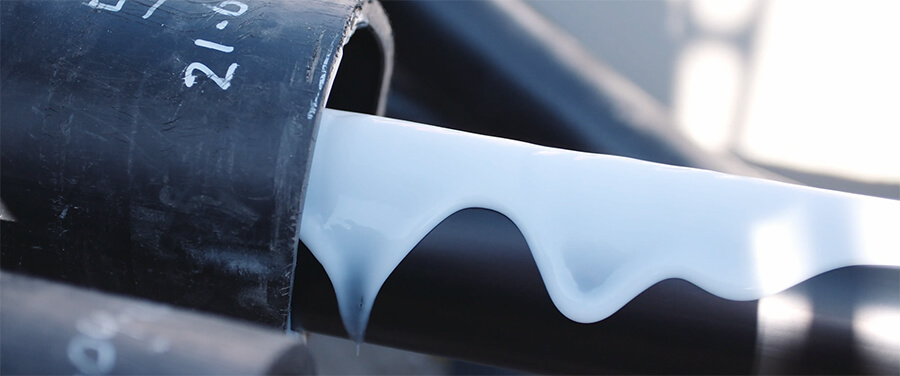Coefficient of Friction in Cable Pulling — Part 1
To assess the feasibility of a cable pulling project, a basic understanding of the coefficient of friction (COF) is helpful.

The science behind cable pulling is of interest to engineers and installers who need to assess the feasibility of pulls. A basic understanding can lead to better field results. At the heart of this science is coefficient of friction (COF), the measurement of which is sometimes called “tribiology.” There are many ways to calculate COF, however it is highly dependent on use conditions. While COF is a constant in tension equations, it is used as a dynamic factor that encompasses other field conditions. This may be called the effective coefficient of friction.
COF Defined: COF is defined as the ratio between the force necessary to move one surface horizontally over another and the force between the two surfaces. COF is used to predict force or tension.
Factors Influencing the Value:
COF is dependent on the two surfaces rubbing across each other, but multiple factors influence the value.
- Materials—variations in material composition influence COF. Polymers may have added fillers or plasticizers. Metal alloys may perform differently, but more often we see difference in the smoothness of finish. Plastic coatings, metal oxides, and other surface variations will all influence COF.
- Movement—the energy to initiate motion (static COF) is higher than that required to keep the object moving (kinetic COF).
- Normal Force—higher pressure will change the surface properties as well. In cable pulling science this is seen as lower COF in bends, under high sidewall force.
- Temperature—depending on the situation and material, temperature will directly affect COF. Cable and conduit materials soften under high temperature and stiffen when cold.
- Lubricant Application—lowers the COF between two surfaces. Lubricants respond to materials differently and are also impacted by the factors above. The lubricant needs to fully coat the surface as the two materials are pressed and rubbed together. Some surfaces are more difficult than others, which is a topic for future blogposts.
| Related Content: Coefficient of Friction in Cable Pulling – Part 2 |
COF Measurement & Selection
So, what COF provides the best cable pulling tension estimates for field planning and optimal cable system design? Is it 0.50 or 0.35? The correct answer? It depends.
The best COF used to predict cable tension can be described as the effective COF. It considers all factors above: the materials, sidewall tension, and–of high importance–the lubricant used. It can also be increased to account for unknown duct conditions, high conduit fill, etc. Luckily for engineers and installers, Polywater® developed and maintains a comprehensive database of effective COFs, providing users access to years of pull data.
Polywater’s extensive COF database, which supports our Pull-Planner™ software was developed from actual cables and conduits. Our knowledge base is built on a variety of test methods and field results. The key to this testing is to know and measure the forces placed on the two materials in order to derive the friction coefficient. In these tests, different cable and conduit types from a variety of manufacturers and material variations are used to mimic field conditions. Our database is built with a broad selection of each material type and thousands of individual tests.
| Related Content: Coefficient of Friction in Cable Pulling Tension from Conduit Bends |
Summary
Polywater has a long history and extensive database of friction measurement. Additionally, our cable lubricants are derived from this work and formulated for specific types of cable pulling. Our installation guidance is based on our knowledge of these materials and factors.